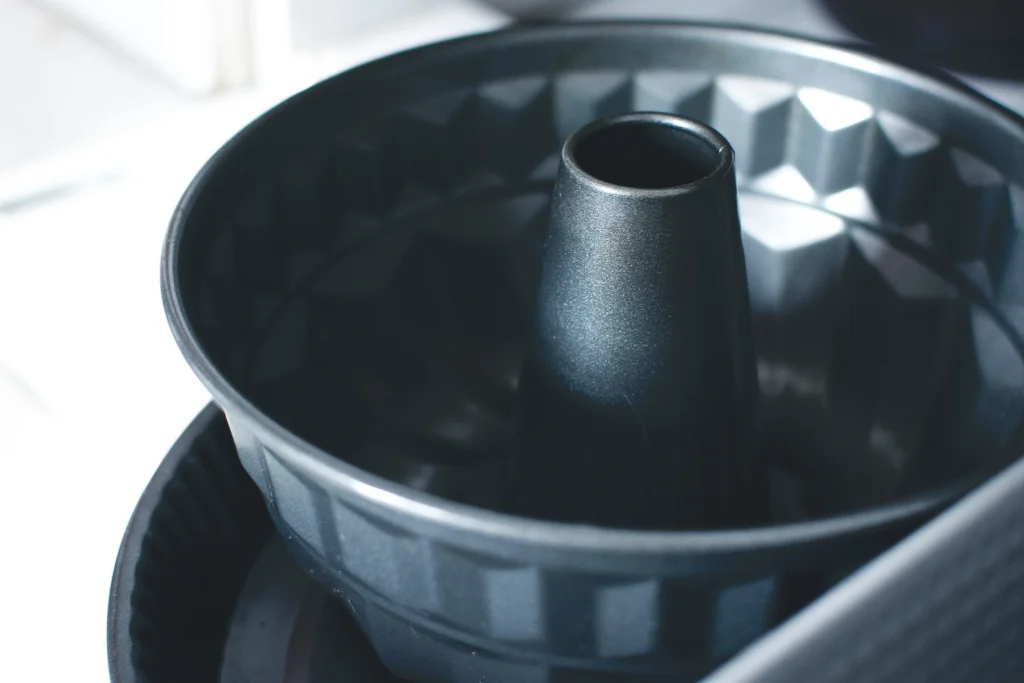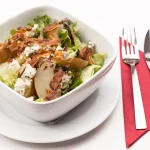The Best Fluffy Pancakes recipe you will fall in love with. Full of tips and tricks to help you make the best pancakes.
When it comes to baking the perfect cake, choosing the right cake pan can make all the difference. Whether you’re a beginner baker or a seasoned pro, understanding the various types of cake pans, their materials, sizes, and how to care for them is essential for achieving delicious, beautiful results every time. From round pans perfect for layered cakes to intricate bundt pans that add a decorative touch, each cake pan has its own unique role in the baking process.
In this ultimate guide, we’ll walk you through everything you need to know about cake pans — how to choose the best one for your recipe, how to prepare and maintain your pans, and expert tips to help you bake like a pro. Get ready to elevate your baking game with the perfect cake pan knowledge!
Types of Cake Pans and Their Uses
Choosing the right cake pan is the first step to baking a successful cake. Each type of cake pan is designed for specific recipes and results, so understanding their uses will help you pick the perfect one for your baking project. Here’s a closer look at the most popular cake pans and when to use them:

Round Cake Pans — Perfect for Layered Cakes
Round cake pans are the classic choice for most cakes, especially layered ones. Available in various diameters, typically ranging from 6 to 12 inches, they create evenly shaped cakes that stack beautifully. Because of their shape, round pans allow for even heat circulation, which helps your cake bake uniformly. These pans are ideal for birthday cakes, wedding cakes, and any recipe where you want a smooth, classic look.
Bundt Pans — Decorative and Ideal for Dense Cakes
Bundt pans are known for their distinctive ring shape with fluted or patterned sides. They are perfect for denser cake batters like pound cakes, coffee cakes, and fruitcakes because the hole in the middle allows heat to reach the center more effectively. This design helps the cake bake evenly and prevents soggy centers. Bundt cakes also make for an elegant presentation without needing much decoration.
Springform Pans — Best for Cheesecakes and Delicate Desserts
Springform pans feature removable sides, making them the go-to choice for delicate desserts like cheesecakes, tortes, and mousse cakes. The latch on the side allows you to release the cake gently without flipping it, preserving the cake’s structure and presentation. These pans often come in round shapes but can also be found in square or rectangular varieties.
Loaf and Sheet Pans — Versatile Options for Quick Bakes
Loaf pans are rectangular and deeper than typical cake pans, ideal for pound cakes, banana bread, and other quick breads. They produce cakes with a dense texture and a crusty edge, perfect for slicing. Sheet pans (or baking sheets) are flat and shallow, best suited for sheet cakes, bars, or brownies. These pans offer a larger surface area, so cakes bake faster and with a thinner profile, perfect for parties and gatherings.
Choosing the Right Cake Pan Material
The material your cake pan is made from plays a crucial role in how your cake bakes. Different materials conduct heat differently, impact how the cake browns, and affect how easy the pan is to clean. Choosing the right cake pan material can help you achieve the perfect texture, color, and ease of release for your cakes. Let’s explore the most common cake pan materials and what makes each unique:
Aluminum Cake Pans — Durable and Even Heat Distribution
Aluminum pans are a favorite among both home bakers and professionals because they conduct heat evenly and quickly. This ensures that your cake bakes uniformly, preventing undercooked centers or overly browned edges. Aluminum pans are lightweight, durable, and often affordable. However, untreated aluminum can react with acidic ingredients (like lemon or buttermilk), which might affect the flavor or color of your cake. To avoid this, many aluminum pans are anodized or coated for non-reactivity and easy cleaning.
Silicone Bakeware — Non-Stick and Flexible
Silicone pans are popular for their flexibility and non-stick properties. These pans allow you to easily pop out your cake without worrying about sticking or damaging the shape. Silicone is heat-resistant and dishwasher safe, making cleanup a breeze. However, silicone pans don’t conduct heat as well as metal pans, which can sometimes result in longer baking times or uneven browning. Because of this, it’s best to use silicone pans for recipes where appearance is less critical, such as muffins or quick breads.
Non-Stick Coated Pans — Easy Release but Care Needed
Non-stick coated pans are metal pans coated with a special layer that prevents cakes from sticking. They are great for delicate cakes that might otherwise break apart when removed from the pan. While the non-stick surface makes greasing and cleaning easier, it can wear off over time, especially if you use metal utensils or abrasive cleaning tools. To maintain the coating, it’s best to use silicone spatulas and hand wash these pans gently.
Metal vs. Glass Pans — What to Know for Baking
While metal pans are the most common, glass pans are also used by many bakers. Glass pans heat more slowly and retain heat longer, which can cause the cake edges to brown more quickly while the center cooks more slowly. This can be beneficial for certain recipes that need gentle, even baking. Glass pans also allow you to see the cake as it bakes, which helps monitor doneness. The downside is they can be heavier and more fragile. Metal pans, especially darker ones, absorb heat faster and create a crispier crust.
If you’re looking to enhance your baking setup with a versatile and durable cake pan, consider the Ninja Foodi Multi-Purpose Pan available on Amazon. This pan is known for its excellent non-stick surface and multi-functionality, making it perfect for baking a wide range of cakes with ease and even heat distribution.
Cake Pan Sizes and Shapes Explained
When it comes to baking, the size and shape of your cake pan are just as important as the type and material. Using the right size pan ensures your cake bakes evenly, has the proper texture, and fits your recipe’s serving needs. The shape can influence not only the cake’s appearance but also its baking time and how it holds moisture. Let’s break down the essentials of cake pan sizes and shapes to help you make the best choice.
Understanding Cake Pan Dimensions and Depth
Cake pans come in a variety of diameters and depths, and both dimensions affect how your cake will turn out. The diameter refers to the width of the pan, while depth determines how tall your cake will be. Standard round pans often range from 6 to 12 inches in diameter and 2 to 3 inches deep. Deeper pans are great for taller cakes or recipes with more batter, but they may require longer baking times to cook through the center. Shallow pans bake faster but can cause thinner, flatter cakes. Always check your recipe’s recommended pan size, as using a pan that’s too large or too small can affect texture and baking time.
How Pan Size Affects Baking Time and Temperature
Baking time and temperature can vary significantly depending on your cake pan size. A smaller or deeper pan holds more batter, meaning heat takes longer to penetrate, and the cake needs more time to bake through. Conversely, a larger, shallower pan spreads the batter thinner, causing it to bake faster and sometimes dry out if left too long. If you’re adjusting pan sizes from a recipe, you may need to lower the oven temperature slightly and increase the baking time, or vice versa, to prevent overbaking or underbaking. It’s always a good idea to monitor your cake closely when trying a different pan size.
Choosing the Right Pan Shape for Your Recipe
Cake pans come in many shapes beyond the classic round: square, rectangular (loaf or sheet), and specialty shapes like heart or novelty pans. Square and rectangular pans are great for sheet cakes, bars, and brownies, offering easy slicing and portion control. Specialty pans add a fun or elegant touch to celebrations, but they may require adjustments in baking time due to their unique dimensions. Round pans are versatile and best for traditional layered cakes, while bundt pans with a hole in the middle allow even heat distribution for dense batters. Consider the final look and texture you want before choosing the shape.
Cake Pan Sets — Are They Worth It?
Many bakers invest in cake pan sets that include multiple sizes and shapes, which can be convenient if you bake frequently or want versatility. Sets often come with stackable pans, saving storage space, and sometimes include specialty shapes or various depths. However, it’s important to consider the quality of the pans in a set—some may be thin or prone to warping. Investing in a few high-quality pans that match your baking style can be better than buying a large set with pieces you rarely use.
Understanding cake pan sizes and shapes empowers you to select the perfect pan for your baking project, ensuring your cakes come out just right every time. If you ever need to substitute one pan for another, keep these size and shape factors in mind to adjust baking times and temperatures accordingly.
Cake Pan Care, Maintenance, and Preparation Tips
Taking good care of your cake pans not only extends their lifespan but also ensures your cakes release easily and bake evenly. Proper preparation before baking and routine maintenance after use can save you from sticky situations and uneven bakes. Here are essential tips to help you care for and prepare your cake pans like a pro.
How to Properly Grease and Line Your Cake Pans
One of the most important steps before baking is preparing your cake pan to prevent sticking. Greasing your pan with butter, shortening, or oil creates a barrier between the batter and the pan’s surface. For extra security, especially with intricate or non-stick pans, lining the bottom with parchment paper is a great idea. Simply cut a piece of parchment to fit the pan’s base and place it after greasing. This combination makes cake removal smooth and prevents damage to the cake’s shape. For silicone pans, light greasing may not be necessary but check your recipe or pan manufacturer’s recommendations.
Cleaning Tips to Extend Your Cake Pan’s Life
Proper cleaning is key to keeping your pans performing well. Avoid abrasive scrubbers or harsh detergents, which can damage non-stick coatings or scratch metal surfaces. Instead, soak pans in warm, soapy water to loosen stuck-on batter, then gently clean with a soft sponge. For stubborn residue, a paste of baking soda and water can help lift the grime without scratching. Dry your pans thoroughly to prevent rust, especially for metal pans. If you use dishwasher-safe pans, verify the manufacturer’s instructions before placing them in the dishwasher, as repeated dishwasher use can wear down coatings.
Storing Cake Pans to Prevent Damage
How you store your cake pans can affect their longevity. Stack pans carefully to avoid dents or warping, placing a soft cloth or paper towel between pans if stacking tightly. Store pans in a dry area to prevent moisture buildup, which can cause rust or mold on pans with wooden or paper parts (such as removable parchment liners). For pans with removable bottoms or sides, store them assembled or carefully disassembled to avoid losing parts or causing damage.
Troubleshooting Common Cake Pan Problems
Even with care, problems can arise when using cake pans. If your cakes stick despite greasing, it might be time to replace the pan or use additional preparation methods like flouring or using non-stick sprays with flour. Warped pans can cause uneven baking, so if your pan looks bent or uneven, consider replacing it. For pans that brown too quickly, try reducing oven temperature slightly or lining the pan with foil to prevent over-browning edges. Lastly, if cakes are baking unevenly, make sure the pan size matches your recipe, and consider rotating the pan halfway through baking for even heat distribution.
With these care, maintenance, and preparation tips, your cake pans will stay in great condition and help you create beautiful, perfectly baked cakes every time. A little attention to your bakeware goes a long way in improving your baking experience.
Baking Tips for Using Cake Pans Like a Pro
Even with the best cake pan, baking a flawless cake requires some know-how and smart techniques. From preparing your pan correctly to adjusting baking times, these expert tips will help you use your cake pans with confidence and achieve delicious, beautiful results every time you bake.
Always Preheat Your Oven and Position Pans Correctly
One of the simplest but most important tips for baking success is to always preheat your oven fully before placing your cake pans inside. An oven that’s not at the right temperature can cause uneven baking or improper rising. Position your cake pans on the center rack of the oven to allow for even heat circulation around the pans. If you’re baking multiple pans at once, make sure there’s enough space between them to prevent hot spots and uneven baking.
Use the Right Amount of Batter for Your Pan Size
Overfilling or underfilling your cake pans can drastically affect the final outcome. As a general rule, fill pans no more than two-thirds full to allow room for the cake to rise without spilling over. If your batter quantity doesn’t match your pan size exactly, consider adjusting the amount or using a different pan size to avoid overflow or overly thin cakes. Using a kitchen scale to measure batter can help with accuracy.
Rotate Pans for Even Baking (When Appropriate)
Some ovens have uneven heat distribution, causing one side of the cake to bake faster than the other. To combat this, rotate your cake pans halfway through the baking time—turn them 180 degrees—to ensure even cooking. However, avoid opening the oven door too frequently, as this can cause temperature fluctuations that affect the cake’s rise. Use this technique mainly when your oven is known for hot spots.
Test for Doneness Without Overbaking
Knowing when your cake is perfectly baked is key to great texture and flavor. Use a toothpick or cake tester inserted into the center of the cake—if it comes out clean or with just a few moist crumbs, your cake is done. Avoid opening the oven door too early or too often, as this can cause your cake to collapse. If you notice your cake browning too fast on top but still wet inside, tent it loosely with aluminum foil to protect the surface while the inside finishes baking.
Allow Cakes to Cool Properly Before Removing
Removing your cake from the pan too soon can cause it to break or stick. Let your cake cool in the pan on a wire rack for about 10 to 15 minutes to firm up slightly. Then, run a knife or thin spatula around the edges to loosen it before carefully inverting or lifting it out. For delicate cakes or those baked in springform pans, use extra caution to maintain the cake’s shape and prevent damage.
By mastering these baking tips, you’ll maximize the performance of your cake pans and consistently bake cakes that look and taste fantastic. Baking is both a science and an art—these tips will help you bring out the best in every batch.
For more delicious inspiration, check out The Best Orange Pound Cake for Citrus Lovers — a perfect recipe to try with your cake pans.





